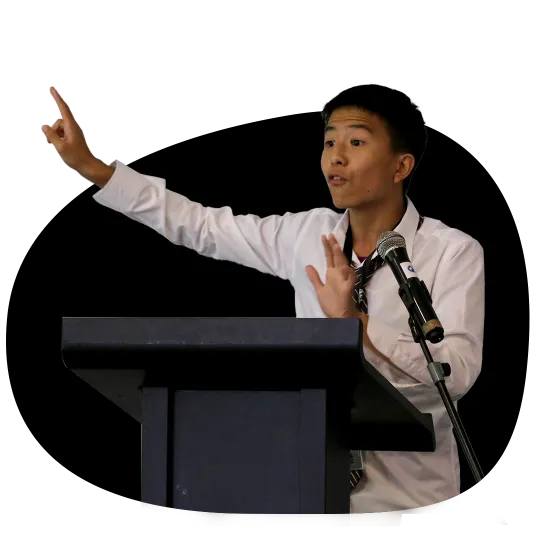Personal Narratives - How To Develop Topics?


No matter how old or young you are, everyone has a story to tell. What’s great about public speaking is that it gives you a platform to share your story with the world. Whether you’re competing in Original Oratory, presenting a personal narrative at your local Toastmasters chapter, or speaking about your experience at a job interview, sharing personal stories can be both entertaining and informative, and help you and others learn from your experiences. So, how do you find a story worth sharing? Here are a few essential tips for brainstorming topics for a personal narrative.
First off, what is a personal narrative?
Personal narratives are narratives that explore real-world situations that are meaningful to the speaker. The main character is the storyteller themselves, so speeches are generally written in first person (that is, using words like “I,” “me,” and “my”). The story you tell should be real, not fictional, and should have affected you personally. A personal narrative might describe an exciting moment in your life, a challenge you’ve faced, or a difficult situation you overcame. A personal narrative can take the form of a standalone speech, or as an example within a broader speech topic, to establish relatability or credibility with your audience.
As with any public speaking event or format, the first step is always to generate a topic and map out your speech. We recommend two strategies to help you brainstorm: the popcorn method and the timeline method.
- First, the popcorn method: in three minutes, which is about the same time you need to make popcorn, list all the major moments in your life that have made a significant impact on you. These should be events that evoke strong emotions – either positive or negative. It could be anything: your first hiking trip, a song that inspired you to start singing, or meeting someone who’s changed your life, for better or for worse. Keep listing out moments until your time is up and then review your list.
- Another strategy you can try is the timeline method. For this strategy, draw a horizontal line on a blank sheet of paper. This line represents a timeline of your life. It begins with the number zero and ends with your current age. Mark down the most important milestones and memories you can recall. For instance, at age seven you might have learned how to play an instrument, moved to a new city, or adopted a pet pig.
Alright, so what’s next? From this huge list of ideas you’ve generated from either method, pick one event or a series of events that you feel strongly about. After you’ve made your choice, let’s move on to develop your topic in more detail. For this, we have two tips: try applying the “starbursting” method or the “many why’s”.
- Starbursting method - Imagine the event you’ve selected forms the center of a star. Now, think about the topic from the audience’s point of view. What questions might they have about your topic? Try to generate as many questions as you can using the 5 W’s and 1 H – who, what, where, why, when, and how. Who was involved? Where did the story take place? What made this moment stand out? How has this event made you who you are today? Don’t try to answer the questions just yet. Keep adding questions, like light bursting from the center of the star. Once you’ve written out every question you can possibly think of, go back and answer them one by one.
- "Many why’s” - While it sounds like a rock band from the 1960s, this method can actually help you further develop the topic idea you have chosen. Let's say you want to write a personal narrative about how you became an expert in scuba diving. You can begin by asking yourself: Why did I fall in love with this hobby? Why did I finally try it out? Why is diving different from swimming? Why do ocean creatures fascinate me? For every answer you give, probe further by asking another “why” question, like a toddler who can’t stop questioning the world.
You can try one or both of these strategies to get as many ideas as possible on the page. Once you’ve finished answering the brainstorming questions, circle and combine the answers that stand out as the most interesting or surprising. This will form the basis of your personal narrative’s first draft.
Don’t worry if you don’t have the entire story mapped out just yet – public speaking takes time! At this stage, your goal is to narrow down your choices to a topic you find interesting and would feel confident speaking about. From here, we can move on to outlining your speech and writing your first draft.
Mastering the art of the personal narrative is a key component to effective communication. Regardless of the occasion, stories bring people together, and help audiences connect more deeply with you as a speaker. For more on this topic, check out Part 2 of the Personal Narrative series to learn how to write a speech outline.
Interested in levelling up your communication skills? LearningLeaders offers public speaking classes within its world-class Academy Program, where experienced coaches guide you through the process of writing a speech from start to finish and provide expert feedback every step of the way. Follow the button below to learn more!

